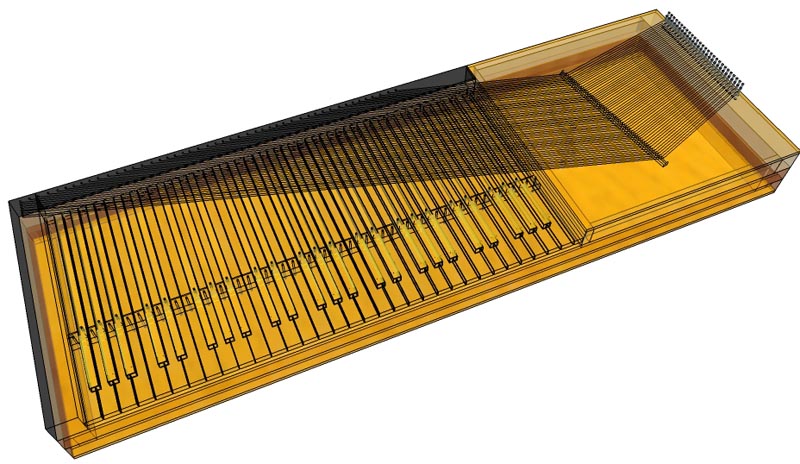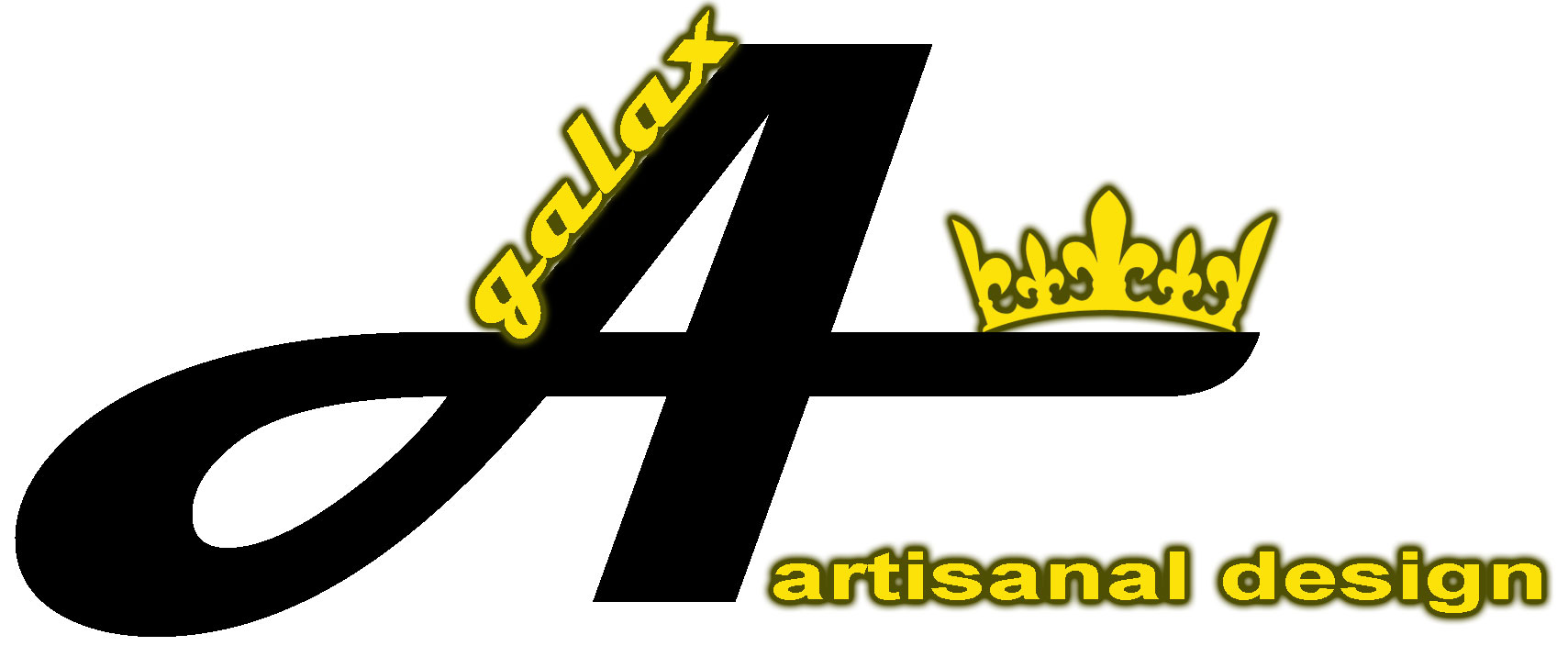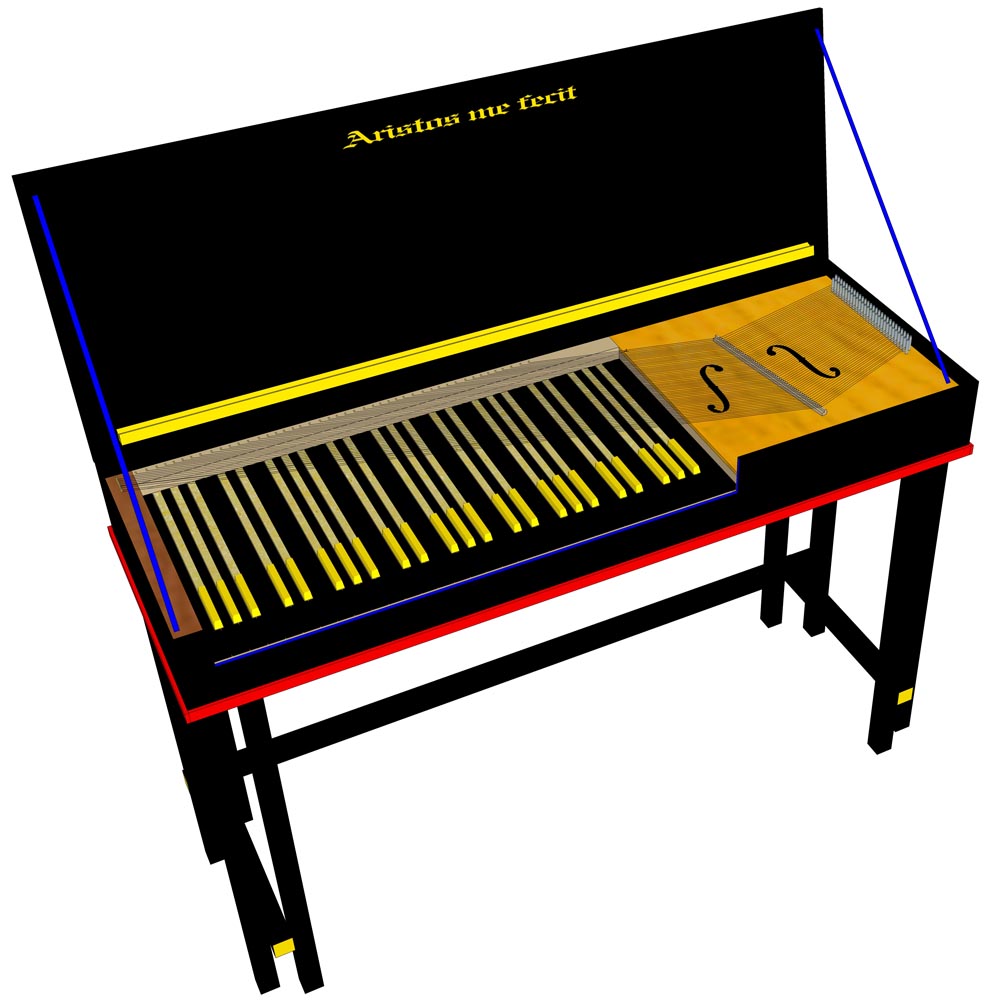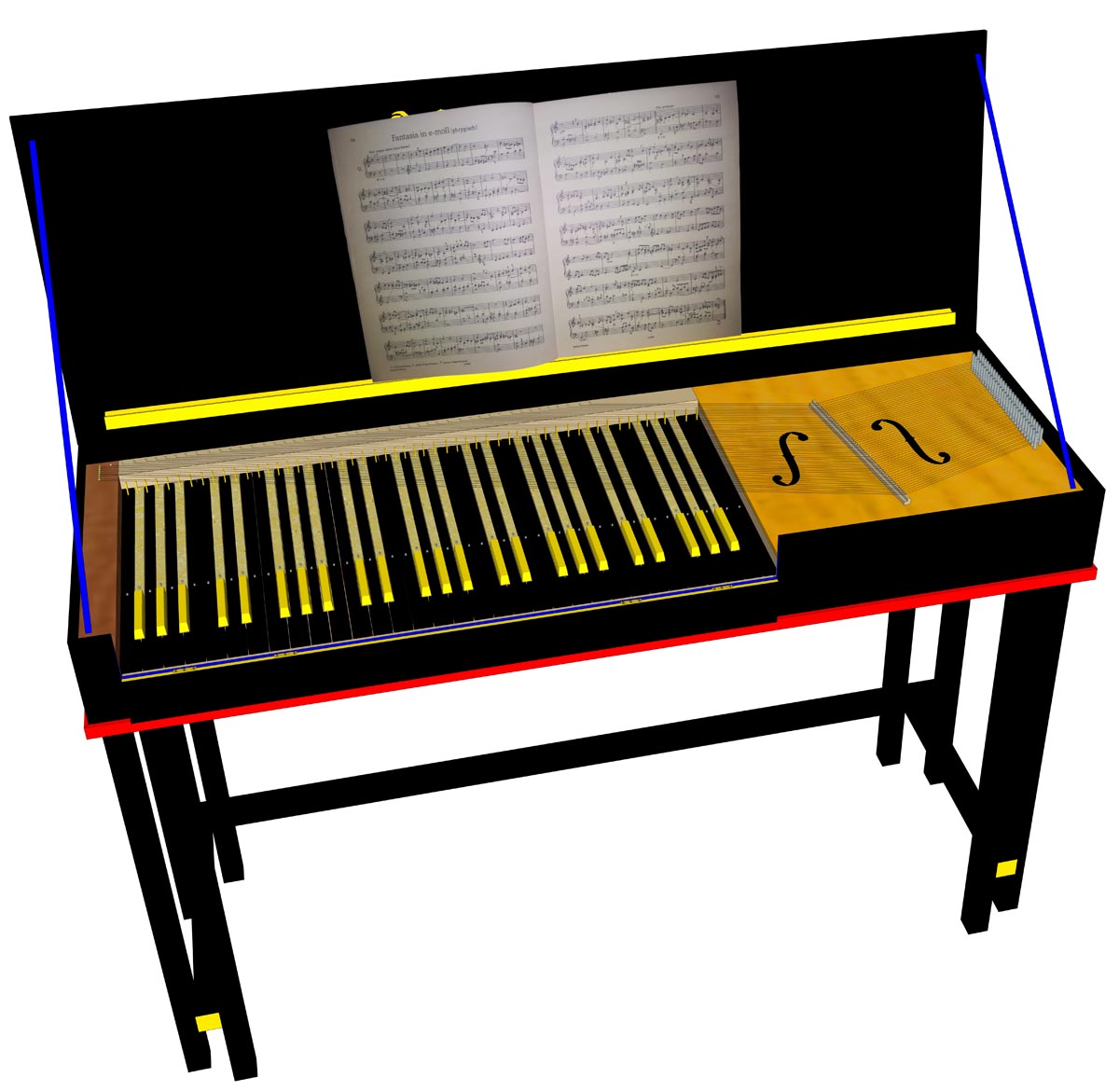Start Furniture Musical Instruments Background Biography Crafts Order Contact Links |
 The clavichord is - for those who don't really know the instrument - the real precursor of the piano. This means that it is a percussion instrument, whilst the harpsichord is plucked instrument. Where the piano uses a complicated mechanism, ending in the hammer which 'wacks' the chord, the clavichord uses the most simpel method to strike the string. A simpel piece of brass, called a tangent, on the end of the key, hits the string and that's it. A bit of history In the early days - we're talking early middle ages - this instrument disposed of one string only. That's why is was later called a 'monochord'. Depending on where it struck the string, the sounding length of string (calculated from the lowest tone) was shortened and produced a higher tone. Later the masters got the bright idea, that it of course was possible as well to mount more than one string on the instrument - and the 'fretted clavichord' was a fact. In these instruments 2 - 4 keys shared the same string. Normally you never used the keys which were next to eachother at the same time, so with less string the instrument was much easier to tune. When the music started to be more complicated, more elaborate and more demanding, a need arose to be able to do more with the clavichord. So every tone got its own string. Later even two strings per tone to produce a stronger sound. The sound of the instrument is piano - even pianissimo - and resembles a bit the sound of a lute. A trained player of the clavichord even is capable of giving the sound a vibrato, by swinging the key by minor muscular movements. In jargon this is called Bebung in untampered German. Probably you think now, that it is very straightforward to build a clavichord. Not too many mechanical contraptions, but instead a most direct percussion mechanism. This is not true though. Especially because of the delicate sound of the instrument, all kinds of side sounds (key movement, return of the key into basic position) tend to become to important. Apart from that it is of course important to keep the strings under exactly the proper tensions. There are means at the disposal of the builder for that - but I will not eleborate on that subject here. Beethoven as well as the sons of Bach still played with much enthousiasm the clavichord, but round and about 1830 it had to make room for that other keyed percussion instrument, the piano. After a pause of approximately one and a half century the instrument became popular again. Especially amongst people who loved the delicate sound, but also amongst people who lived in a flat and who liked to play a acoustic instrument, for whom is was impossible to make real "noise". Here the clavichord presents a briljant solution: playing a 'real' instrument without the need for electricity and with the possibility to express oneself by ones own fingers instead of activating some filter on the keyboard. Design aides One way to make the sound of the clavichord a bit louder - we are talking subtle nuances, not meant for those who are used to fling the volume control to the right - is to create a double sound board, just like the instruments of the violin family. That's what we did and you are invited to judge the result as soon as the prototype is ready. So please keep coming back here. More information An instrument like this, is not something you buy easily by the Internet - like the furniture on this site by the way. So extensive information should be exchanged before any transaction. If you would like more information, please write a note here.
Material Wood: the best wood for sound boards available of Epicea (spruce) which grows high in the mountains. Furthermore a diversity of wood for the different purposes of a harpsichord: oak for stability, pearwood for dimensional stability, pine for lighter parts, etc.
Format Height 78 cm.; width 40 cm.; length: 120 cm. Range FF – c3 (56 keys). |
English Nederlands Français Deutsch
|
The last time this page was loaded, it was h.


